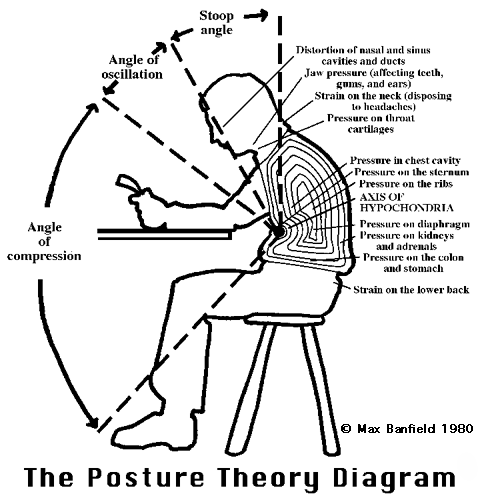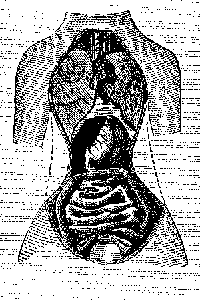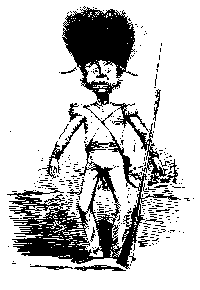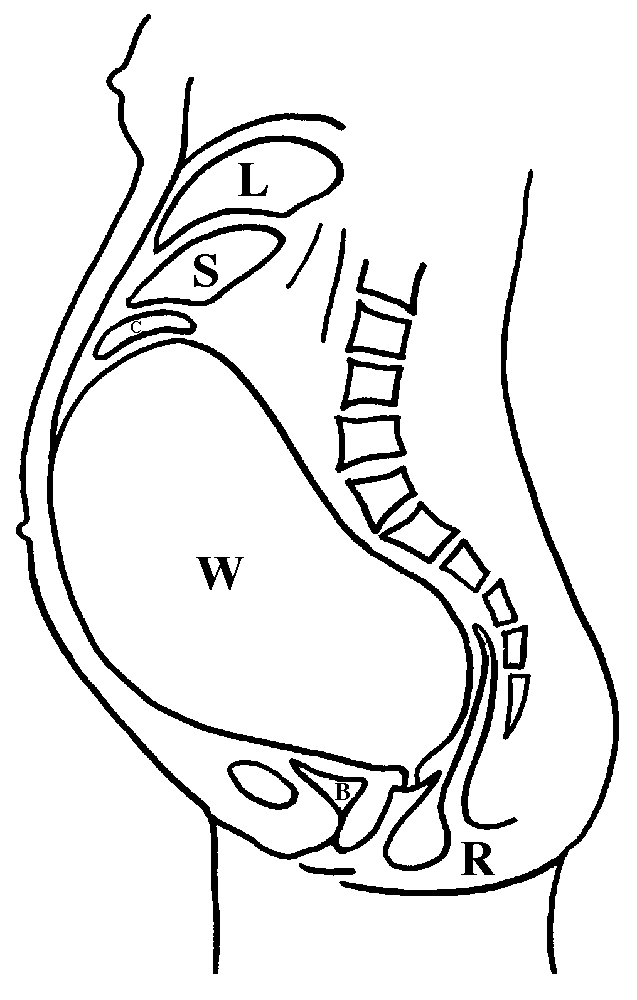The Posture Theory
Examination
These tests have been designed for medical students, doctors, second year high school students, parents, teachers, and the general public, for the purpose of assessing their knowledge of The posture Theory. They are to be completed voluntarily and marked by the person who does the tests. |  |
The Introductory questions
Print out the following list of questions and place a tick in the boxes for your answers Yes, or No
|
The Test questions
Posture and health
1. Name three major causes of spinal deformity.
2. What causes dentist’s spine.
3. What is the major cause of undetectable back pain encountered in orthopedic practice.
4. What causes postural back pain.
5. What type of spinal deformity predisposes to a variety of pains occurring in one side of the body.
6. Why do some people experience palpitations when they lay down in bed at night, and why is this prevented or relieved by remaining in the sitting position, or by slowly lowering to the laying position.
7. Why do some people experience sudden sharp stabbing pains in the lower left and right side of the chest.
8. Why do some people with lower left and right sided chest pains think that they are having heart pains.
9. Why do some people guard their upper abdomen when their abdomen is being prodded during some medical examinations.
10. Why do some people sometimes experience abdominal pain when they lean forward to tie their shoe laces.
11. Why do some people feel faint when they lean toward a desk to read or write.
12. Why do some people feel dizzy and faint when they lean toward the kitchen sink to wash the dishes, or when they lean toward the washing machine to load clothes.
13. Why do some people feel faint and dizzy when they squat down.
14. What is Erben’s phenomenon.
15. Why do some people feel faint and dizzy when they bend their neck to look up at items on high shelves.
16. Why do some people experience abdominal pain when they are sitting and leaning forward, and experience haemorrhoidal pain when they stand for long periods of time.
17. Why do some people who have stooped spines have a multitude of health problems while others don’t.
18. What type of chest deformity sometimes accompanies the stooped spinal deformity.
19. What is the axis of hypochondria and what pains occur along it and why.
20. Do you think that sitting up straight will (a) cure the postural symptoms immediately and completely or (b) arrest the number, frequency and intensity of symptoms (c) gradually reduce the intensity of symptoms or (d) improve the manageability of posturally induced symptoms or (e) prevent any new postural symptoms or (f) sometimes create new symptoms in relation to the change in postural focus.
21. Do you think that all postural symptoms are caused directly by (a) mechanical factors or (b) some are caused by secondary damage to the spine or internal structures.
22. If a person has neckache when they are young and have been told that the pain is all in their mind and later in life there is evidence of degenerative changes in the vertebrae of the neck is this evidence that (a) the neck ache has always been all in the mind or (b) that poor posture is one of the probable causes or (c) that the degenerative changes are an unrelated coincidence.
23. Would you advise young patients to (a) sit correctly as part of a regime of ensuring good health in adult life or (b) to slouch as much as they like because poor posture is not a cause of chronic pain and ill health.
24. How do you prevent postural deformity (a) by sitting on ergonomic chairs or (b) by sleeping on orthopedic bedding or (c) by using the Alexander Technique or (d) by doing Yoga or (e) by good nutrition or (f) by regular exercise or (g) by wearing corsets or (h) by always carrying heavy weights in one arm or (i) by having a debilitating illness for 6 months or (j) by having sufficient exposure to sunlight during childhood or (k) by having a basic understanding of the principles of biomechanics.
Return to the exam question index
25. In the nineteenth century there was an epidemic, particularly in England and Europe, where women suffered from a multitude of ailments dominated by the tendency to faint. Was this because (a) there were complicated social and psychological factors which made the majority of civilized women hysterical, or (b) the invention of the sewing machine brought about the mass production and widespread distribution of tight-waisted whalebone corsets which compressed their torsos and impeded blood flow to their brains.
26. Why did the classical hysterical fainting fits which were very common in the nineteenth century become rare in the early twentieth century (a) because of new psychotherapeutic methods which were effective as a treatment or (b) because corsets went out of fashion at that time.
27. Why did corsets go out of fashion in the early twentieth century (a) because clothes fashions always come and go or (b) because public debates finally convinced the general community that wearing the garment was extremely harmful to human health.
28. Why did the severe form of irritable colon known as muco-membranous colitis become rare after 1914 (a) because it was caused by the stress of world war 1 or (b) because it was caused by tight waisted corsets which crushed the colon, and world war 1 brought the corset period to its final demise.
29. When women wear corsets day and night for the purpose of giving themselves a wasp waisted appearance do their internal organs (a) remain in their same normal shape or (b) become crushed with some parts being pushed upwards and some downwards.
30. When women wear “training corsets” day and night for the purpose of giving themselves a permanent wasp-waisted appearance do their internal organs (a) keep slipping back to their normal shape and position every time the woman removes their corset or (b) remain permanently displaced and deformed.
31. What type of diseases would you expect women to suffer from if they wore corsets which tightly compressed the upper abdomen, as compared to the diseases which would occur with corsets which compressed the lower abdomen.
32. If wearing tight shoes can permanently deform the bones of the feet, could tight corsets deform the bones of the spine, and would the deformity be temporary or permanent.
33. What type of skeletal deformity occurred in women who wore high waisted corsets.
34. What type of skeletal deformity occurred in women who wore low waisted corsets.
35. Some doctors argued that compressing the womb and ovaries with tight waisted corsets had no effect on womens health. What do you think.
36. If tight waisted corsets caused disease in women would any form of tight waisted clothing have a similar effect, and would the incidence and severity of disease be related to the degree of tightness.
37. Were nineteenth century women frequently breathless with emotion because they were emotionally insecure, or because they wore corsets which deformed their chests and lungs, impaired the function of their diaphragms, and restricted their breathing.
38. Why did nineteenth century women who wore corsets tend to have J-shaped stomachs, and livers which were virtually split in two.
39. Would having a vertical J-shaped stomach instead of a horizontal steer-horn stomach be one reason why nineteenth century women had severe digestive disorders.
40. What causes the zig-zag deformity of the colon, and why was this deformity common in nineteenth century women.
41. Why were nineteenth century country women free of the diseases which were epidemic in city women.
42. Why were the diseases which were common in nineteenth century British women, virtually non-existent in the native women of Africa and the women of some other countries such as Japan.
43. What effect did the shape of the corset have on the shape of the spine.
Return to the exam question index
44. What type of symptoms are common during the first weeks of pregnancy when the womb is enlarging within the pelvis.
45. What type of symptoms are common during the middle period of pregnancy when the enlarging womb is pressing upwards against the diaphragm and chest.
46. What type of symptoms are common during the latter weeks of pregnancy when the womb is dropping toward the pelvis in preparation for childbirth, and what is the sudden change of symptoms called.
47. Some pregnant women feel faint when laying on their back, but this can be relieved if they lay on their side. Why.
48. Why do many women experience back pain during pregnancy.
49. Why do many women develop hemorrhoids during pregnancy, and why does this condition usually subside after childbirth.
50. Why do women often experience palpitations and breathlessness during pregnancy.
Why do some women develop high blood pressure and proteinuria during pregnancy.
Some women experience a variety of distressing symptoms in the weeks following childbirth when the womb is reducing toward its normal pre-pregnancy size. Why.
If a woman is suffering from post-natal fatigue and is not showing any signs of depression but is diagnosed as having post-natal depression, do you think the diagnosis is justified.
In the post-natal period some women experience palpitations, dizziness, or faintness when they lean toward the kitchen sink to do the dishes. Why.
Answers
1. Prolonged infection in childhood which involves poor appetite and weight loss, rickets, infections and injuries involving the spine, poor vision, poor ergonomics, sustained occupational postures, pregnancy, and osteoporosis. (any three of these – other factors may also be relevant).
2. Prolonged leaning forward at the waist due to the persons occupation.
3. Postural back pain.
4. Spinal deformity and prolonged postures.
5. Scoliosis
6. Visceroptosis
7. Weaknesses and tenderness in the area due to prolonged postural pressure on the lower ribs. (pinching a nerve)
8. Because they do not know the difference between surface chest pain and deep central heart pain.
9. Because it is tender due to postural pressure of the tip of the sternum on the upper abdomen, possibly involving weakness in the junction of the esophagus and stomach.
10. Because the area is tender due to injury or prolonged postural pressure, and the tenderness is aggravated by the additional pressure caused by bending.
11. Because they have impaired circulation which is made worse by postural pressure on the chest cavity.
12. Same as 11.
13. Same as 11, and pressure on the back of the neck may add to the dizziness where there is some intervertebral degeneration.
14. Temporary slowness of the pulse on stooping or sitting down which is a feature of some cases of neurasthenia (the chronic fatigue syndrome).
15. Pressure on the spinal nerve in the neck.
16. Kypholordosis, where sitting and stooping puts pressure on the upper abdomen, and standing causes the lower back to arch forward and put pressure on the lower back and the lower abdomen.
17. Because some people have a stoop which only effects the upper spine, whereas others have a combination of spinal and skeletal deformities which include forward arching of the lower spine, sideways curvature of the spine, chest deformities, and bowed legs etc. e.g. because when people with stooped spines who also have narrow flat chests and lean forward their lower ribs press down on the abdomen and the tip of the sternum stabs the upper abdomen, whereas when people with stooped spines have broad and deep chests and lean forward the ribs and sternum rotate over and around the abdomen without causing the same sort of pressure. Also because stooping forward will aggravate illnesses and injuries which exist in some people but not others. e.g. sliding hiatus hernia.
18. Flat chest.
19 A line between the left and right sided chest pains which transects the location of the upper abdominal pain which are features of hypochondria. These pains are disposed to because the line acts as a hinge about which the torso rotates when the person stoops.
20. (b), (c), (d), (f).
21. (b).
22. (b).
23. (a).
24. (a), (b), (c), (d), (e), (f), (j), (k).
25. (b).
26. (b).
27. (b).
28. (b).
29. (b).
30. (b).
31. Diseases of the lungs, heart, and stomach, compared to menstrual. pregnancy, and birthing disorders.
32. Yes.
33. Rib cage deformity.
34. Pelvic bone deformity and lordosis.
35. It caused displacements of the womb and twisting of the ovary ducts.
36. Yes.
37. Because they deformed and compressed their chests.
38. The tight corsets squeezed the stomach and liver into those shapes.
39. Yes.
40. Compression of the festooned transverse colon by corsets.
41. Because country women wore loose clothes. (Corsets were only available in city shops).
42. Because British women wore tight waisted corsets, whereas native African women and Japanese women wore loose garments.
43. The spine grew into the shape of the corset.
44. Urinary frequency and other pelvic symptoms.
45. Heartburn, breathlessness, palpitations, faintness, and fatigue.
46. Relief of breathlessness and fatigue (called lightening) followed by the onset of urinary frequency and constipation.
47. This removes pressure from the vena cava.
48. The weight of the spine drags the lower spine forward, especially in thin women who have pre-existing kypholordosis.
49. Because the heavy womb presses on the rectal veins and impairs the flow of blood causing them to bulge until after childbirth when the pressure is relieved. Constipation, as a complication of pregnancy, also contributes to the development of hemorrhoids.
50. Because the enlarging womb presses on the diaphragm, heart, and lungs.



